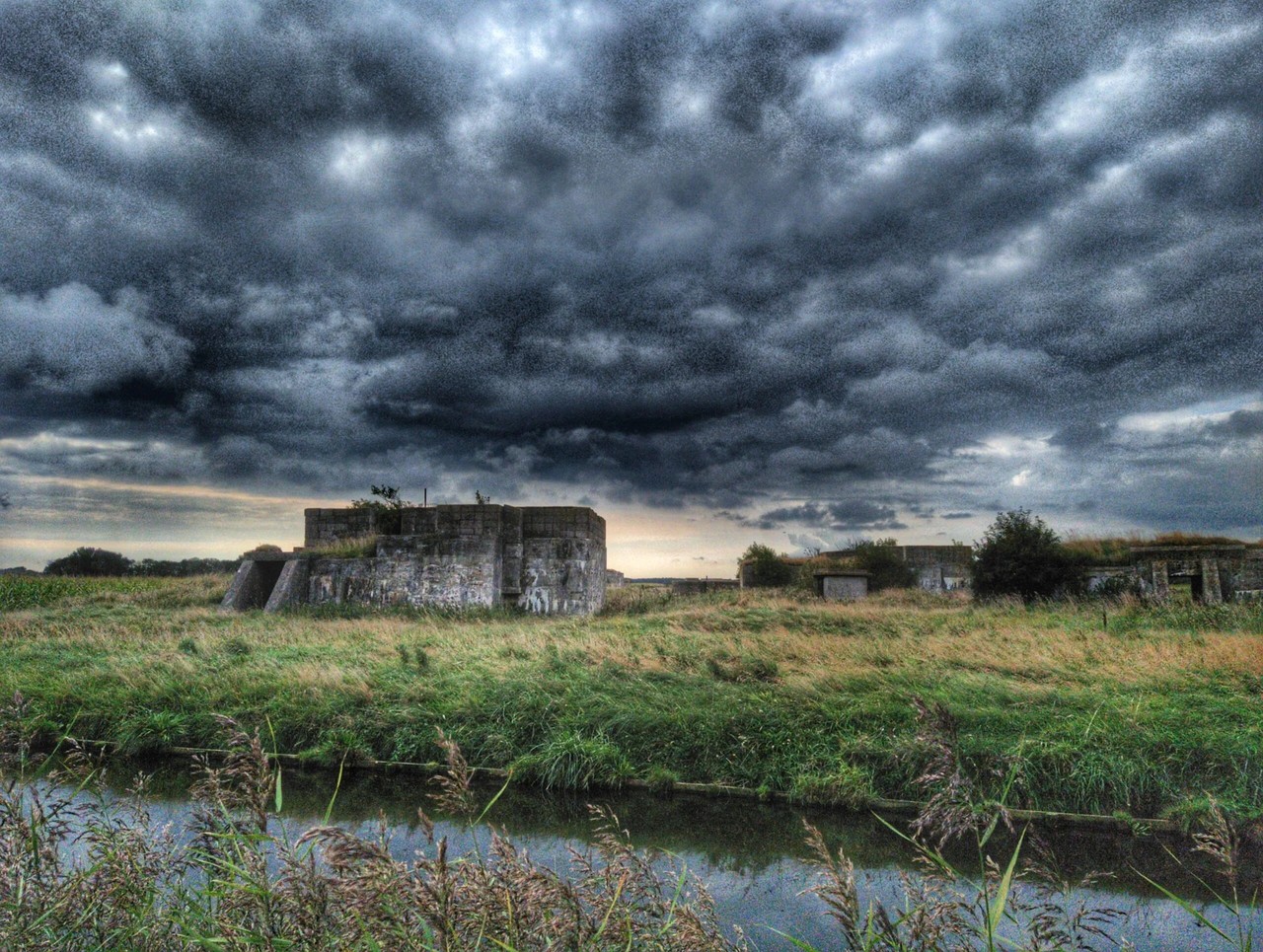Around the airfield, the occupiers seized plots of land to construct seven so-called Widerstandsnester (resistance nests, or WN), meant to house troops who would defend the airfield against attacks. The bunker village designated as WN 4 formed one of these defense points. The core of the “village” consisted of twenty structures that together formed an anti-aircraft battery, equipped with both artillery and support facilities such as searchlights.
The armament included three Flak guns, positioned on the roofs of three bunkers, with a command post situated between them. Ammunition was stored in three additional bunkers nearby.
For the water supply, there was a pump housed in a brick building and a water reservoir built in bunker form, located between the Flak bunkers and the command post. Other structures on the site included a garage, toilet, living quarters, ammunition and food storage bunkers, a kitchen, a generator bunker for the searchlight, and a searchlight emplacement.
Much of the bunker village has survived and is now managed by the Stichting Bunkerdorp (Bunker Village Foundation), which also looks after the natural environment—plants and wildlife—that has reclaimed the area since the war.
